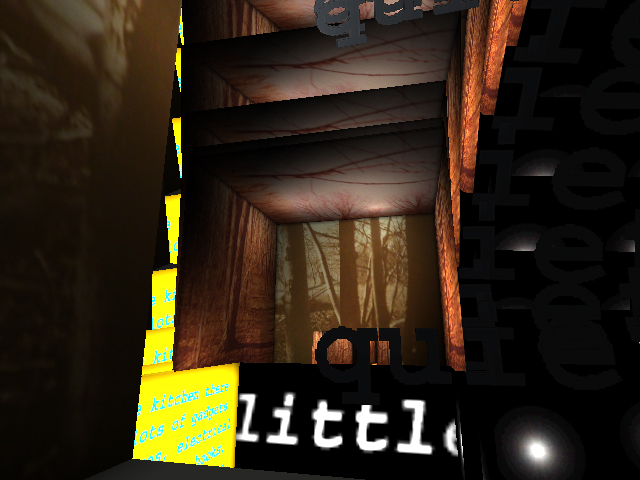
MARY FLANAGAN
[domestic]
2003
[domestic] uses a software engine normally
used to generate violent first-shooter video
games in order to reconstruct a remembered
childhood space where a dramatic event has
taken place: a house fire. The player navigates
an oddly constructed domestic space that is a
psychogeographic map of Flanagan's memory.
Spaces alternate between claustrophobic
hallways and rooms with seemingly endless
ceilings, breaking with the visual conventions of
3D gaming. Family snapshots and shifting,
morphing unstable texts line the surfaces of the
space. Players encounter fire in the space and
are able to shoot "coping mechanisms" at the
walls and at the fire in order to contain them --
romance novels, beer bottles, and words. The
work provokes the questions, what are the
ways space and memory can be reexperienced?
What role, if any, does narrative
and memory have in contemporary computer
games? How can we 'see' memory?

